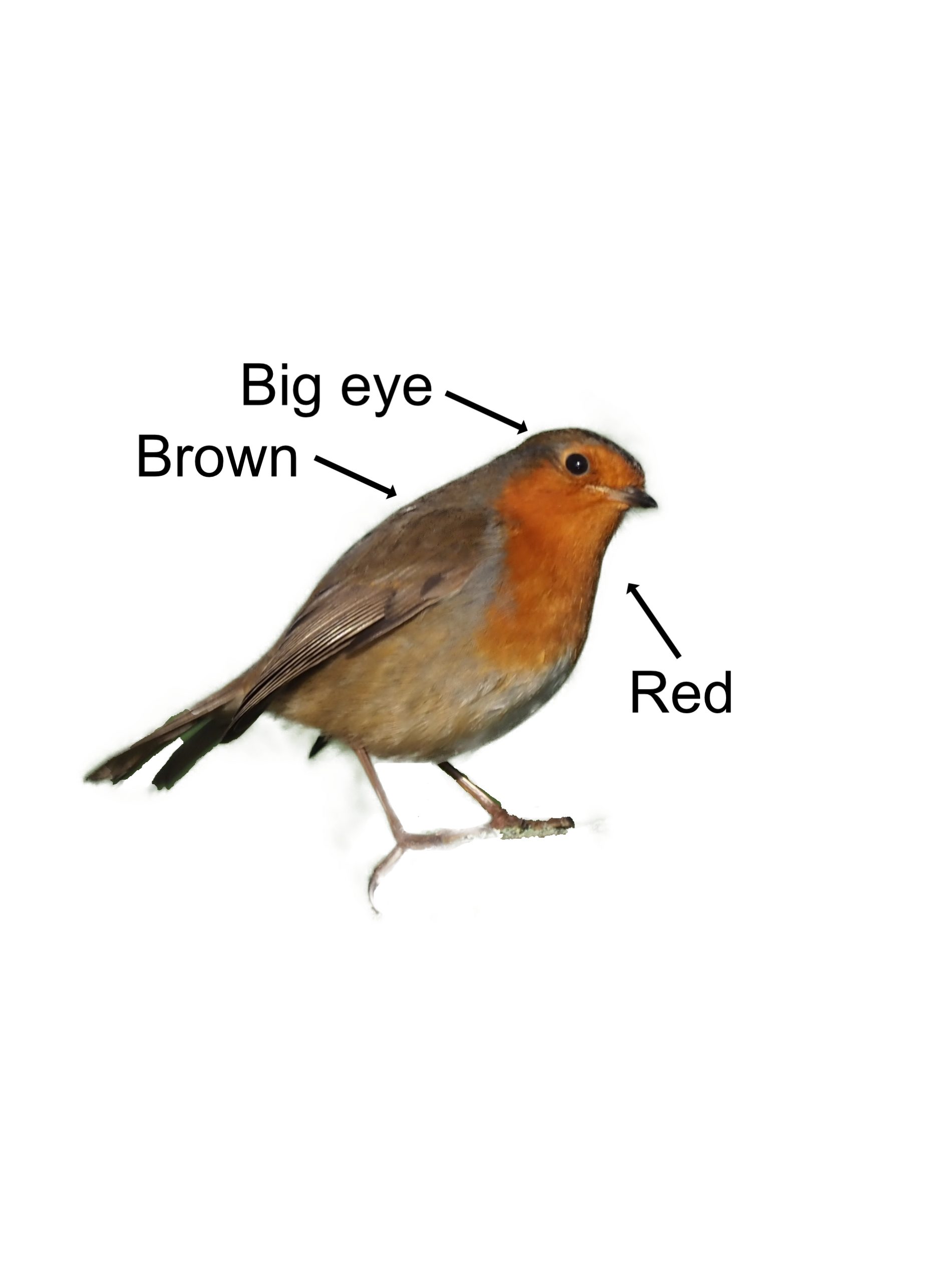
The iconic sweet looking little fellow that appears on Christmas cards. Robins are far from sweet and nice. They are bold, ferocious warriors of the hedgerow, fiercely defending their territories, attacking other males and any competitors that stray too close. They can even get the hump for no reason and attack other small birds without provocation. There are instances of robins even attacking their own reflections. These guys are hard. The Vikings held them to be a storm-cloud bird sacred to Thor, the god of thunder. They curtsey, flick their wings and tail to give you a chance to back off before laying into you. Folklore has it that a Robin should never be harmed, which is not surprising if you know what's good for you.
The Robin is a plump bird (though don't dare call him fat) with a short neck, brown body, red breast and face, and white belly. Their eyes are large and prominent for giving you the hard stare. They have a fluty, wistful song which is slower and sadder in autumn and winter as there is nobody around to beat up. It consists of many short variable verses. They can be heard singing at night near streetlamps - when they have had a few down the pub. The best distinguishing feature is that their song often sounds as if they are singing two notes at once. They have a short break from singing in July while moulting, as who wants to draw attention to themselves when not looking as hard as nails. Their alarm call is a high pitched 'Tseee'.

The Robin normally hunts from a perch looking for movement or by hopping on the ground. They mostly eat insects and worms with some fruit and seeds in winter to help keep their strength up. The male and female have separate territories in winter, calling a spring truce for love. Their red breast is used in courtship (the redder the better for the girls) and to deter rivals (only a warrior wears red clothes).
A Robin's nest is made by the female and consists of grasses and leaves. It is built among tree roots, crevices, and any other useable gap such as a good Robin nest box (the ones without holes as holes are for sissies). They lay about six eggs in April, which hatch after 13 days. The young fly after 13 days and are cared for by both parents for 24 days before leaving. There are usually two broods. The young birds have no red breast and are spotted with golden brown. They delay getting their redbreasts so they are not beaten up by mum or dad.
Robins are abundant and widespread, with over 6.5 million breeding pairs. Most Robins stay local, though there is a little migration south-westwards in the autumn. Robins suffer in severe winter weather, so remember to put Robin food in the feeder and give them a warm nest box to use. The Robin was formerly classified as a member of the thrush family (a turdus), which was not at all cool, but are now considered to be in the flycatcher family which sounds much more fierce. The Latin name is 'erithacus rubecula' which means 'robin' as hard men don't have complicated names - Knuckles does just fine.